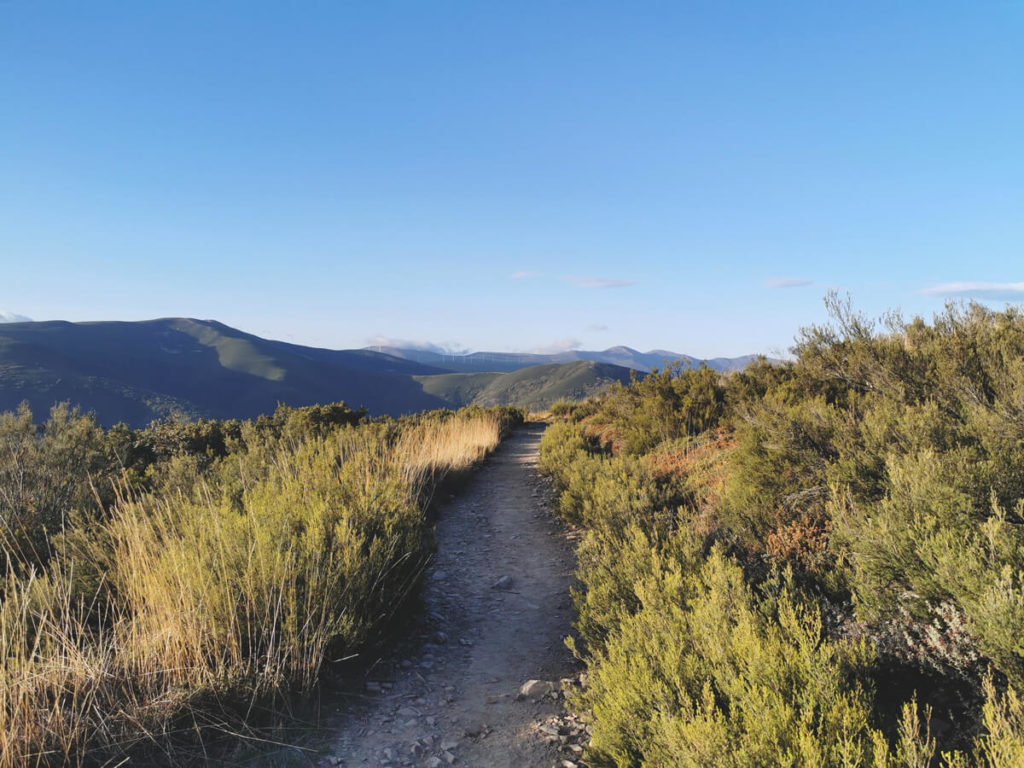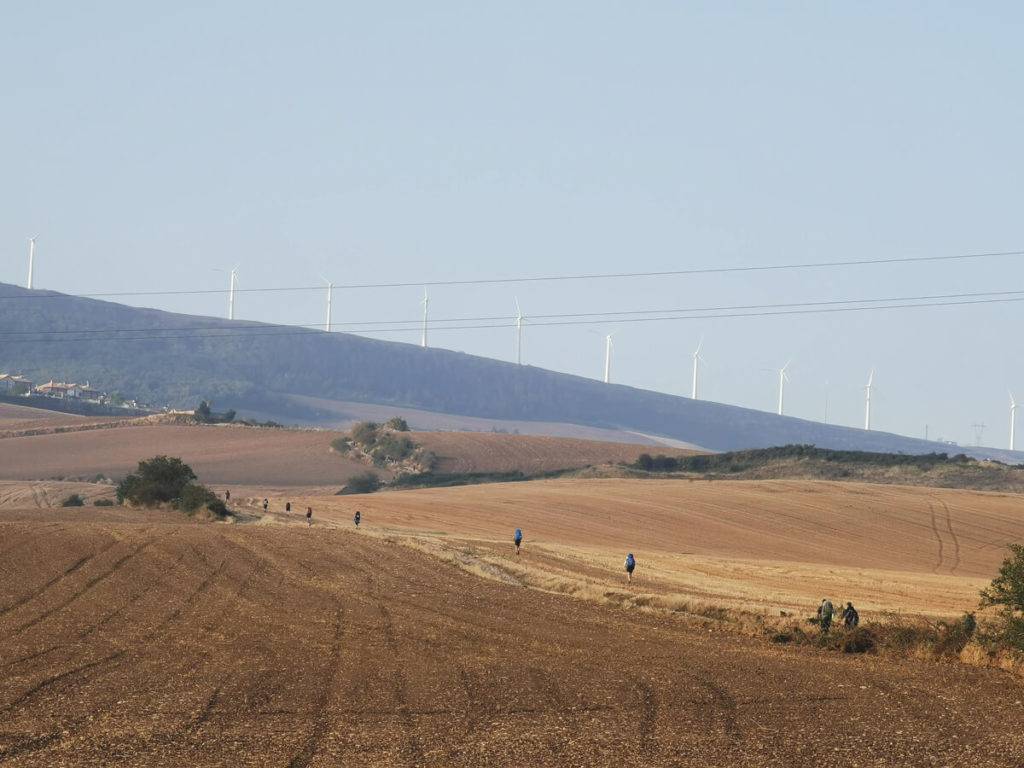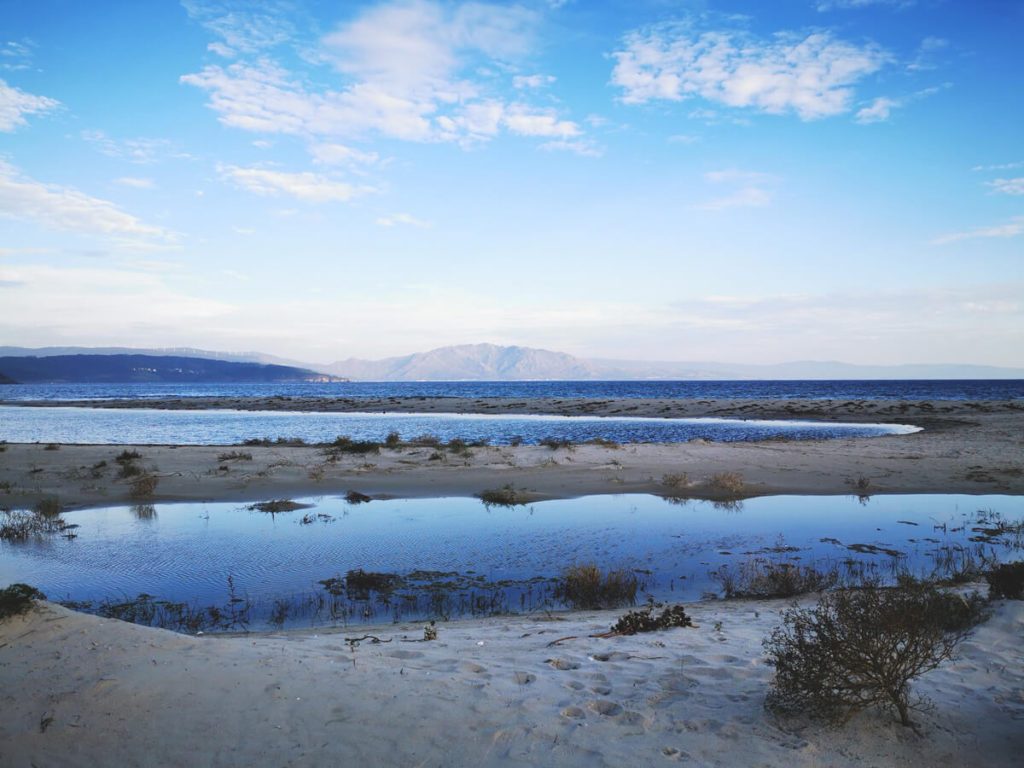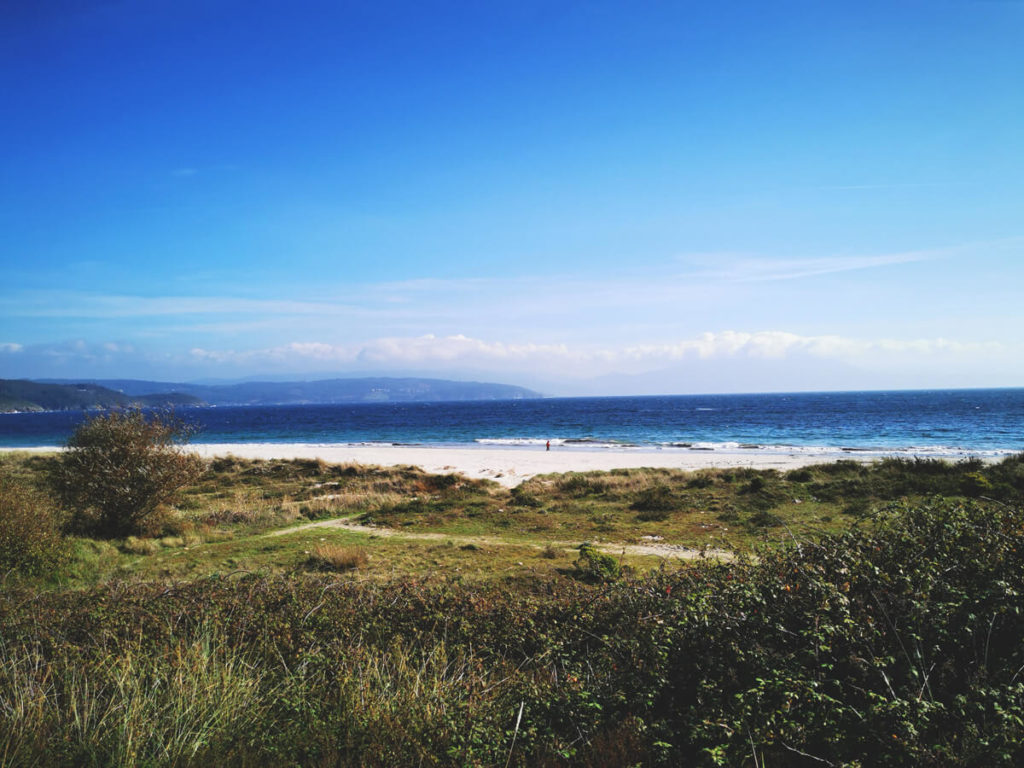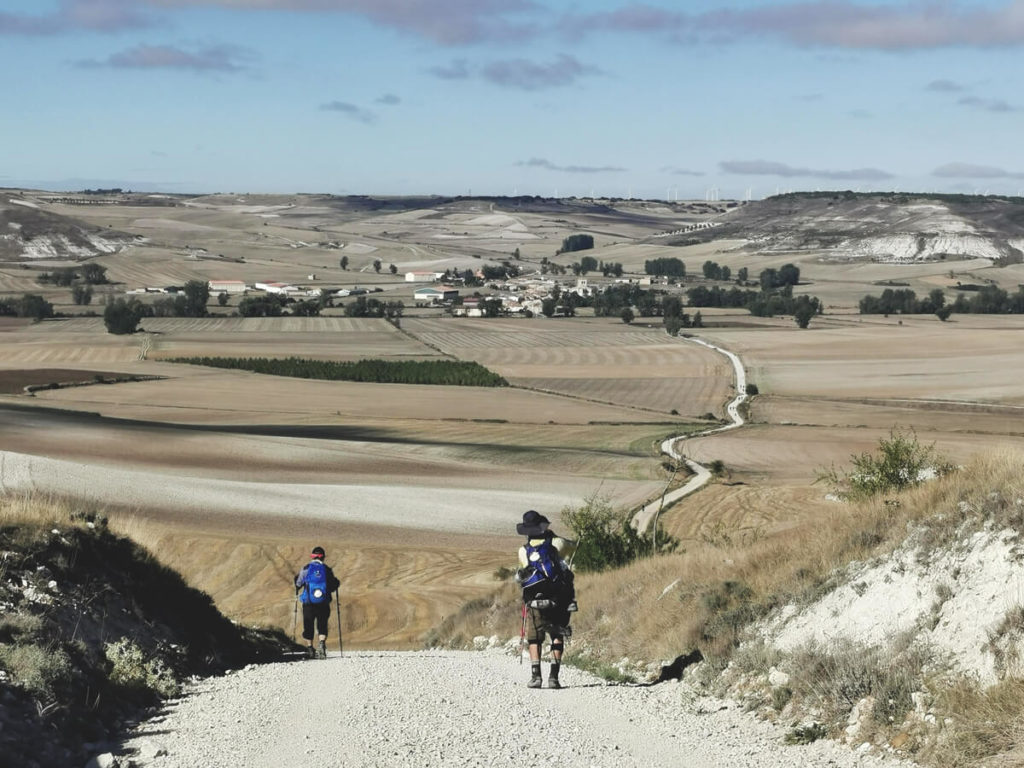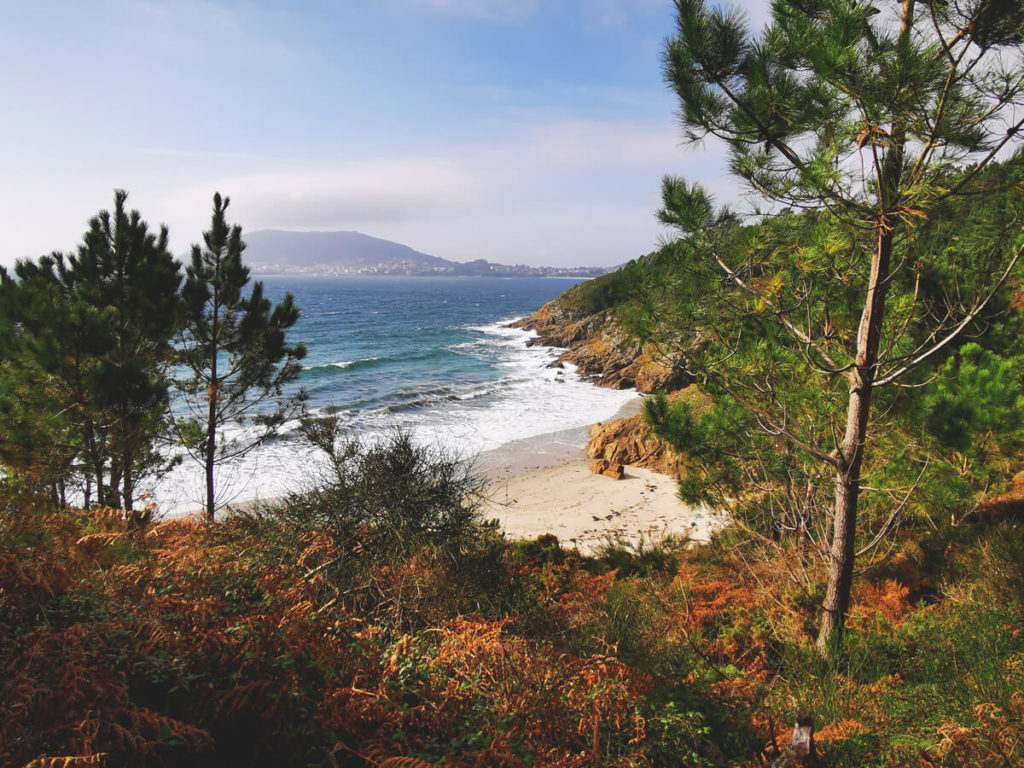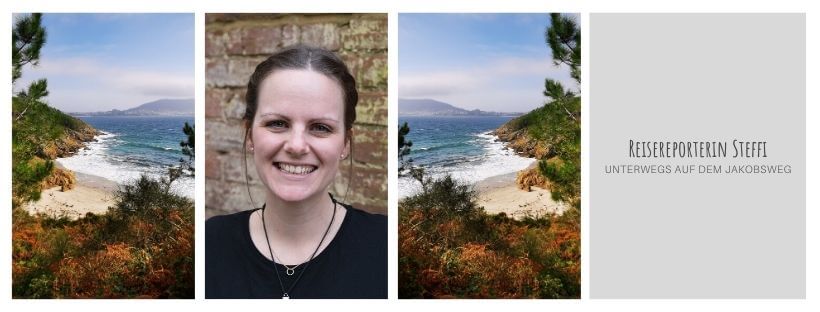You’ve probably heard something about the famous Way of St. James, right? It’s not just a single path, but countless pilgrimage routes in Europe, all of which have the same goal: the tomb of the Apostle James in Santiago de Compostela in northern Spain. Our travel reporter today, Steffi, undertook an unforgettable pilgrimage on what is arguably the most popular Way of St. James, the Camino Francés, between Saint Jean Pied de Port in France and Finisterre in Spain. In today’s very inspiring travel reporter interview, Steffi tells us everything she experienced on this journey and what impact this journey had on her personally. Have fun browsing!
These reports might also interest you:
- Journey through the Atacama Desert
- The most beautiful highlights in Tasmania
- My trip to the Maldives
- Round trip through North Macedonia
- Tonga in South Pacific
- My trip through Mexico
- Cool tour of Cornwall and Devon
- My tour through Myanmar
- On your own through Botswana
- The Indonesian Moluccas
- Top Highlights on Nusa Penida
- Cappadocia in Turkey
- These reports might also interest you:
- 1. How did you come up with the idea of hiking part of the Camino de Santiago?
- 2. How did you prepare for this adventure?
- 3. What is the pilgrim’s passport/pilgrim’s ID card?
- 4. When is the best time to travel on the Camino de Santiago?
- 5. Do you need a map? How did you find your way around?
- 6. And where do you stay overnight on the Camino de Santiago?
- 7. What were your absolute highlights on the Camino de Santiago?
- 8. What was your greatest challenge on this adventure?
- 9. Has this trip changed you?
- 10. How long would you recommend for the Camino de Santiago?
- 11. What would you do differently next time?
- 12. How much does a pilgrimage on the Camino de Santiago cost?
- Impressions of the Camino de Santiago
1. How did you come up with the idea of hiking part of the Camino de Santiago?
Pilgrimage runs in our family; my mom regularly walks various routes in our home region of Bavaria with a pilgrimage group one to three times a year. Accordingly, the Camino de Santiago was a recurring topic at our dinner table, and Hape Kerkeling’s book “Ich bin dann mal weg” (order from Thalia*) was on our bookshelf. When my dad died suddenly five years ago, I became truly aware for the first time how quickly life can pass and that, apart from the grief, I wasn’t happy in my life.
I wanted to change things – I exercised more, tried the latest diet trend, used Tinder to meet new people, and took a new job with my employer – but nothing had a long-term positive impact on my well-being. One evening, I was sitting on my couch scrolling through Netflix, and there it was: the film “The Way” by Emilio Estevez. When the film ended, I knew: This is exactly what I’ve been looking for! And so my decision was made:
“I’m going to walk the Way of St. James, or more precisely the Camino Francés, from Saint-Jean-Pied-de-Port to Finisterre. One week later, I quit my job and booked the flight.
2. How did you prepare for this adventure?
Many pilgrims start training some time before the Camino; unfortunately, I didn’t have the time, as I was working full-time until the day before departure. I simply got a guidebook* and joined various Camino de Santiago groups on Facebook to learn more about the route, accommodations, and the necessary equipment.
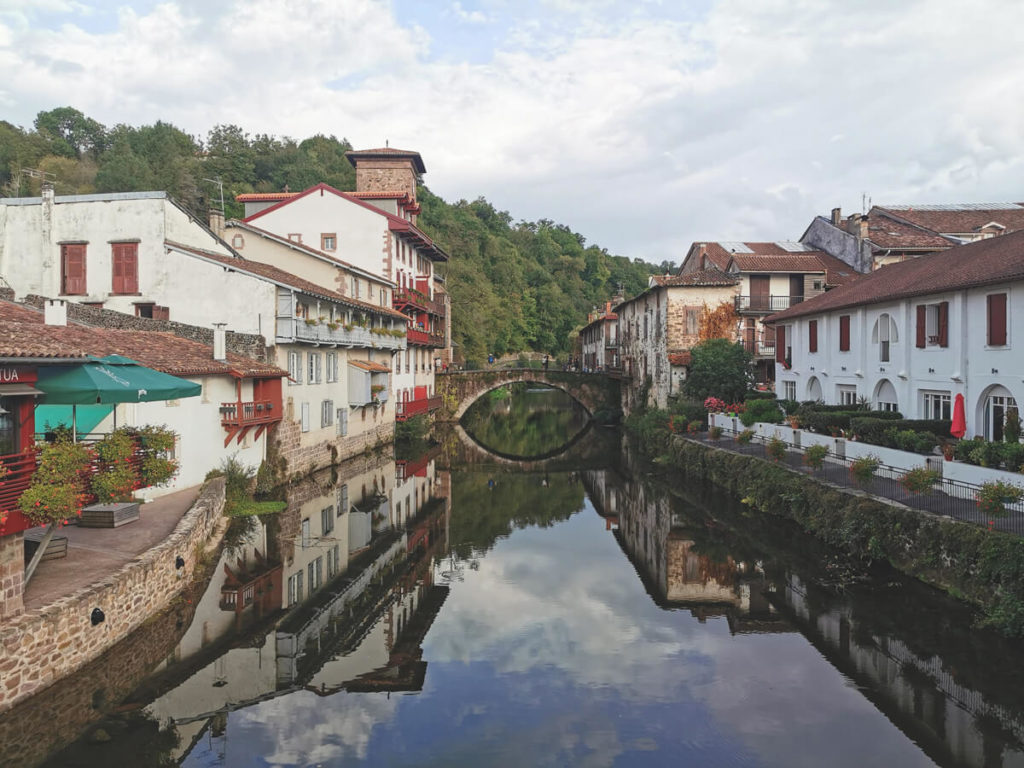
The absolute must-have is a well-fitting backpack and comfortable, preferably broken-in, hiking boots. My hiking poles and Merino sportswear were also indispensable for me personally. When I checked in my backpack at the airport, I was a bit shocked – it weighed a whopping 12 kg, and that was without any food. After 5 days on the Way of St. James, I cleaned out my backpack again and sent about 3 kg home.
3. What is the pilgrim’s passport/pilgrim’s identity card all about?
The The Pilgrim’s Passport has a long tradition and is considered the pilgrim’s official ID. You will need it if you wish to stay overnight in public and religious hostels. Your arrival in the various locations will be confirmed by a stamp – you can get this in the hostels, but also in churches, bars, or official offices. If you would like to receive the pilgrim’s certificate – the Compostela – upon arrival in Santiago de Compostela, you will need the Pilgrim’s Passport and stamp as proof.
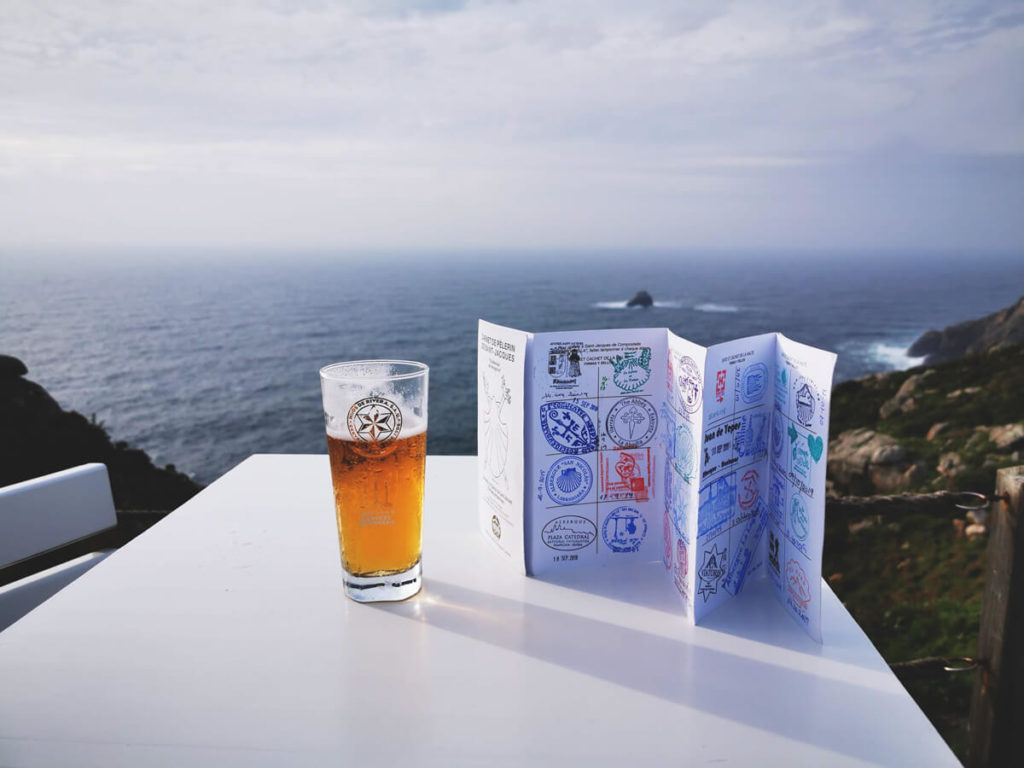
You can order the Pilgrim’s Passport online at www.jakobsweg.de or pick it up at the Pilgrim’s Office at your starting point. I didn’t pick up the Compostela myself, as it takes quite a long time. I have to wait in line. Nevertheless, I had my pilgrim’s passport stamped every day, and I love leafing through it and looking at the different stamps – for me, it’s the best souvenir of my journey.
4. When is the best time to travel the Camino de Santiago?
I was on the Camino Francés from mid-September to the end of October and can highly recommend it. In the regions you travel through at the beginning, it is still very warm and sunny, but not too hot for hiking. However, you should keep in mind that in Galicia – towards the end of the Camino – it often rains, and it can get very cold in the evenings in October. For me, it was the perfect time to travel the Camino de Santiago, as there were fewer pilgrims on the trail, meaning you didn’t have to worry about a place to sleep.
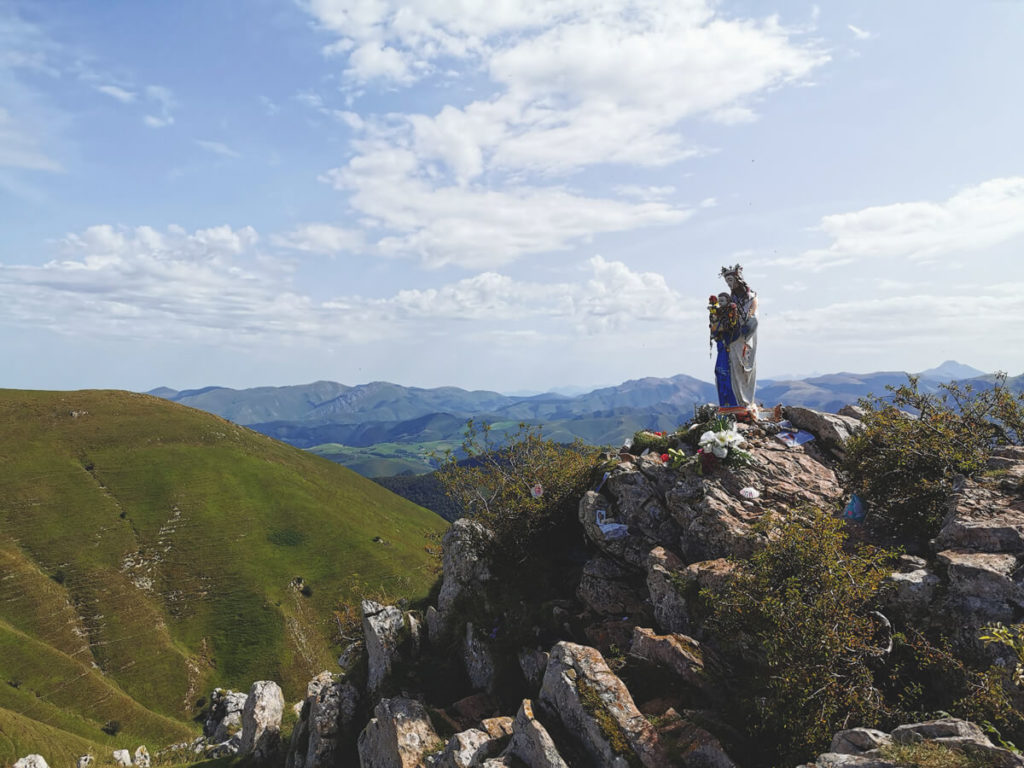
5. Do you need a map? How did you find your way?
On the Way of St. James, you always follow the yellow arrows. In addition to the classic signposts you know from hiking, the arrows can be found anywhere – on trash cans, street signs, house walls, or on the street. But you can’t really miss them. If you ever get lost or want to see how far it is to the next town, I can recommend the Camino Pilgrim app.

In this app, you can plan your Camino, define your individual stages, and use it like Google Maps. The locals are also very helpful and know where the path continues—even if they don’t speak English or you don’t speak Spanish, they’ll be happy to show you the way with their gestures. Click here for the app.
6. And where do you stay overnight on the Way of St. James?
I mostly stayed in hostels and wouldn’t want to miss this experience. That’s where you can quickly strike up a conversation with other pilgrims, and with earplugs, you can sleep well even in a 20-bed room. Most accommodations have bunk beds.
If you start in Saint-Jean-Pied-de-Port, you’ll receive At the pilgrim’s office, you can find a list of accommodations up to Santiago de Compostela. However, I mostly used the app mentioned above, which shows the number of beds and the price of each hostel at a glance, as well as a phone number if you want to book in advance.

Personally, I didn’t want to determine in advance how far I would walk each day, but rather go with the flow and decide spontaneously. Staying where I liked – that was the ultimate feeling of freedom. Every now and then, I decided in the morning what my daily goal was and picked out the hostel I wanted to head for shortly before arriving. That always worked out well.
Two accommodations stand out in particular for me:
Roncevalles is the first day’s stage after crossing the Pyrenees behind. At 6 a.m., you are awakened by the chanting of the monks to begin the second stage. Unless you are as incredibly tired and exhausted from the first day as I was and incorporate the chanting of the monks and the noises in the room into your dreams and sleep until almost 7 a.m. – after that, I was known as a “sleepy girl.” Check out the Tripadvisor reviews* here.
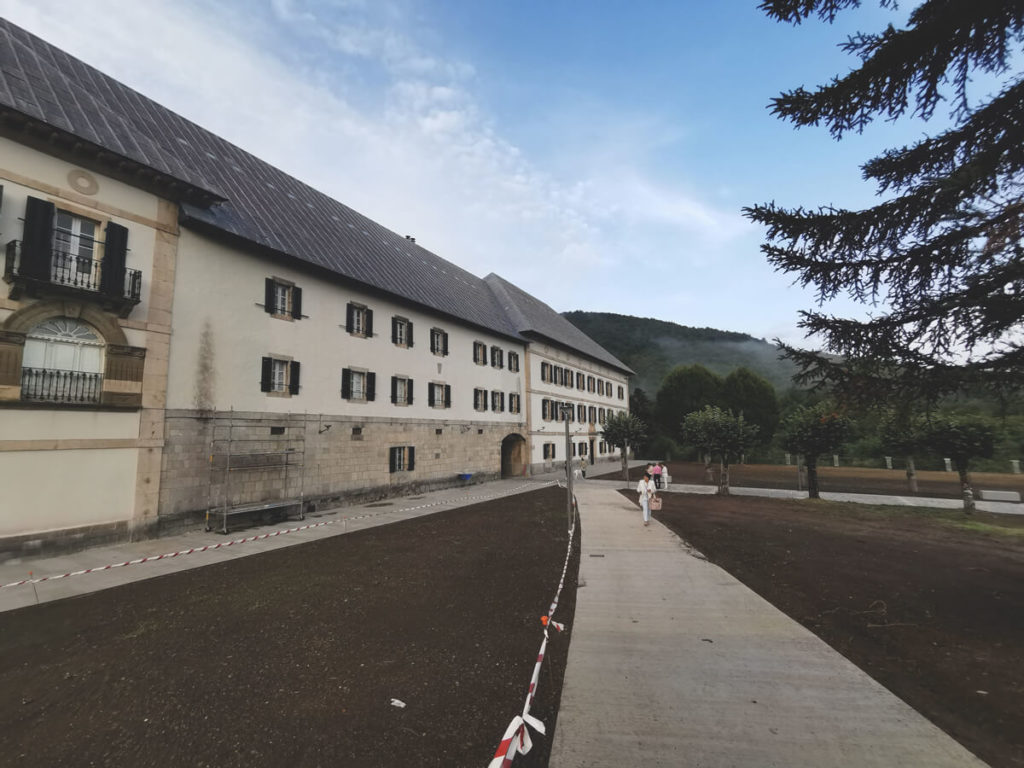
This hostel has a beautiful common area with books and a campfire. The pilgrim menu, which is served in the building next door, is not to be missed. You sit at a long table and are served Spanish home-cooked food by the owner. Here you can Book a bed/your room*.
7. What were your absolute highlights on the Camino de Santiago?
The town of Foncebadón
At 1,400 m, I sat in the evening, wrapped in a blanket, in the garden of our accommodation. From there, you could see so far into the distance, and thus also back to the distance you had covered. Thunder and lightning flashed over León, the last big city. At that point, I had already been on the road for more than three weeks, but realized for the first time how far I had already walked and that I didn’t really want the Camino de Santiago to end.
Arrival at Cape Finisterre
Seeing the signpost “0.0 km” at Cape Finisterre and realizing that after 900 km you have reached the end is an indescribable feeling. Without speaking much, I sat with other Pilgrims below the lighthouse and watched the sunset.
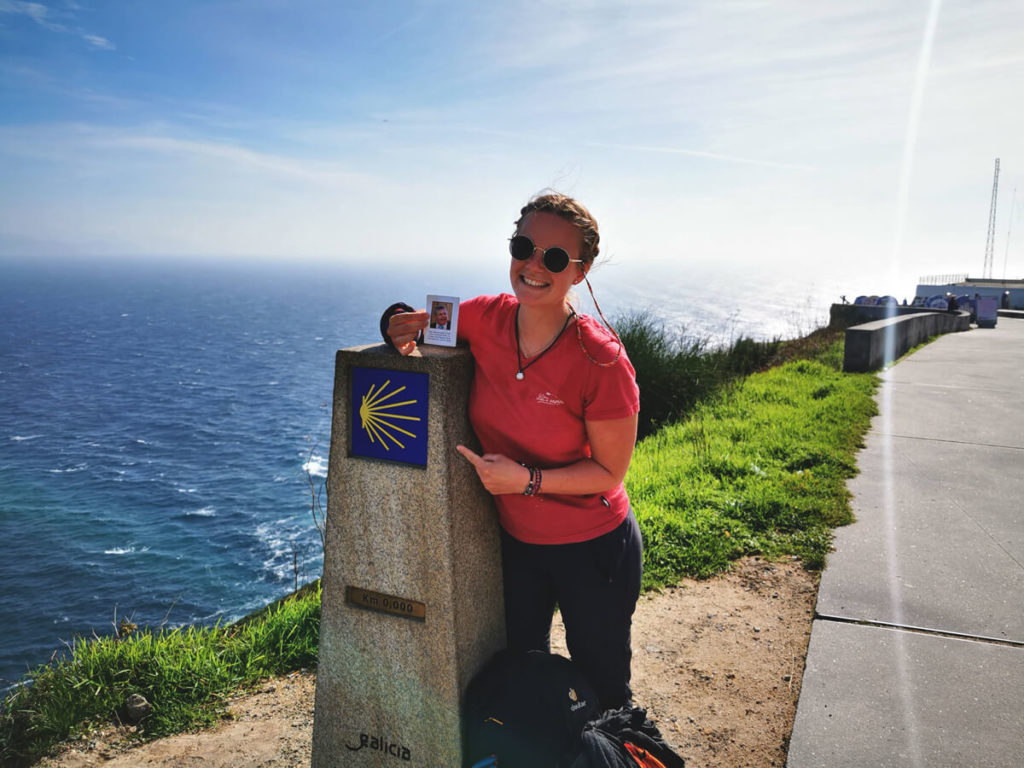
The Village of Molinaseca
After walking downhill all day, the small village of Molinaseca suddenly appeared – nestled in a mountainous landscape with a river flowing right through it, perfect for swimming. I arrived there relatively early and decided to stay and enjoy the charm of the small village.
The Camino Family
Strangers became my family. I have never experienced such helpfulness and openness as on the Camino. Despite, or perhaps because of, the sometimes large age difference, I deep conversations and listened to moving life stories. Among the encounters was also my personal highlight – my current partner. We met in the first week and finished the Camino de Santiago together in Finisterre.
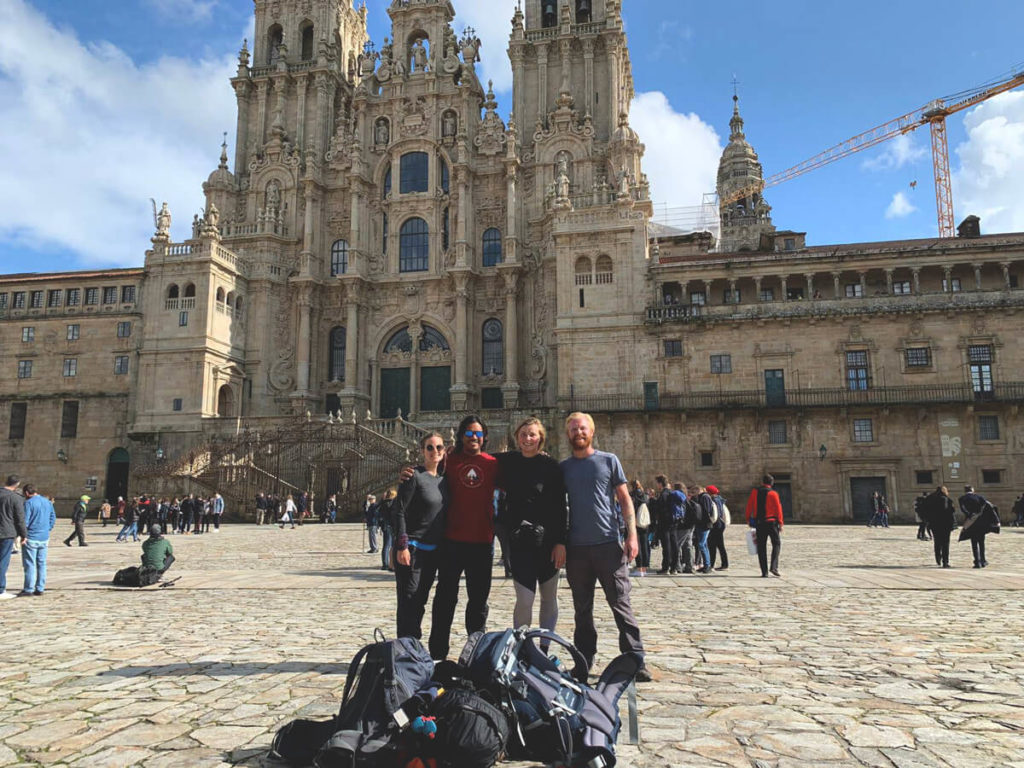
8. What was your biggest challenge on this adventure?
My biggest challenge was listening to myself and my body. I was already struggling with knee and hip pain on the third day, so my body demanded a break after five days. But my ego got in the way and told me I couldn’t take a rest day yet, after all, I hadn’t even been on the road for a week.

A phone call with a friend helped me realize that I wasn’t under any time pressure and that my body was sending me clear signals that I shouldn’t ignore. So I treated myself to a day off – and guess what? On my rest day, I not only met my current boyfriend, but also a physiotherapist – and now a good friend – who got me fit for the rest of my journey.
9. Has this trip changed you?
For the first time in my life, I didn’t have to be in a certain place at a specific time. I had 6 weeks to get to grips with myself. You’re often asked along the way: “Why are you walking the Camino de Santiago?” The answers I received to this question, as well as the stories and life experiences behind them, shaped and inspired me long-term. I finally spoke and acted from my heart again, instead of doing what others expected of me.
I learned to let go – every day you leave a place that was your home for a short time. You send things back home to lighten your luggage; you say goodbye to people who accompanied you on part of your journey because they stopped earlier or their destination was different from yours. I also learned to get by with fewer things – everything I needed was in my 30-liter backpack.
After my return, my apartment and especially my closet completely overwhelmed me, so I had to clean out the first thing. In short, this trip changed me. So much has happened and happened since the Camino de Santiago – the Camino doesn’t end in Santiago de Compostela or Finisterre. However, I would advise everyone not to set out with too many expectations. In the documentary “Nur die Füße tun mir leid” (I’m only sorry for my feet) by Gabi Röhrl, someone summed it up very well:
“Go and see what the path does to you.” I can’t add anything to that.
10. How long would you recommend for the Camino de Santiago?
I was on the trail for a total of 6 weeks. I didn’t book a return flight, so I took my time. In principle, you can do the Camino in 5 weeks. Some walk the route in stages each year because they can’t take that much time off. Everyone has to find the right option for themselves. However, I advise anyone who can take a longer time off not to limit themselves in terms of time, but to embrace the journey.
11. What would you do differently next time?
I would take less luggage from the start and take my time. The saying “The journey is the destination” can be taken literally on the Camino de Santiago – it’s not really about arriving in Santiago de Compostela or Finisterre. Personally, I would also brush up on my Spanish so I can communicate more with the locals. However, it should be mentioned that you can get by just fine without Spanish.
12. How much does a pilgrimage on the Camino de Santiago cost?
I’m always asked how much money you should budget for the Camino de Santiago. But that’s hard to say, because it all depends on how you want to plan it. Some hostels offer their accommodation on a donation basis, while others charge between €5 and €25 per person. Many hostels also have a kitchen, allowing you to cook your own meals. Some accommodations and almost every restaurant offer the so-called pilgrim menu (a three-course meal), for which you pay between €10 and €15. So it’s difficult to set a budget.
In this spirit, “Buen Camino.”
Impressions from the Way of St. James
